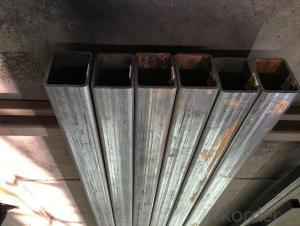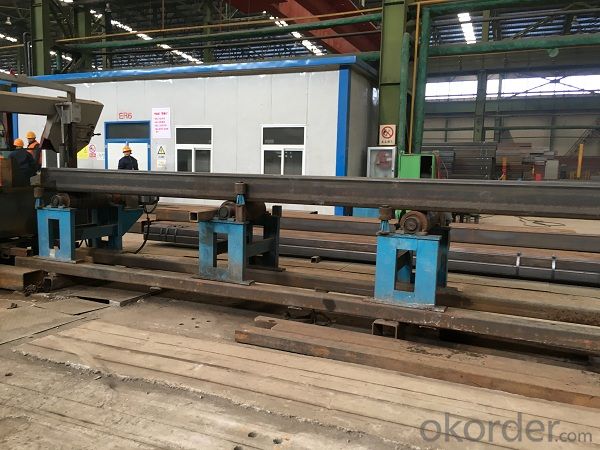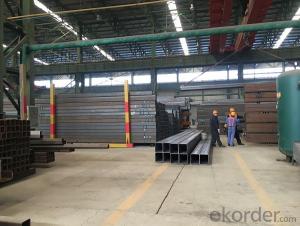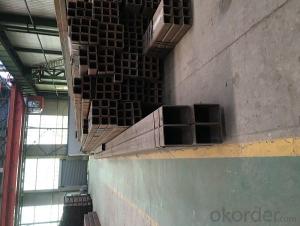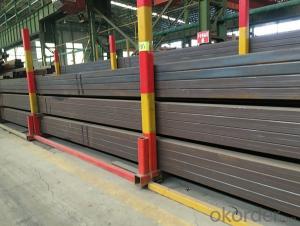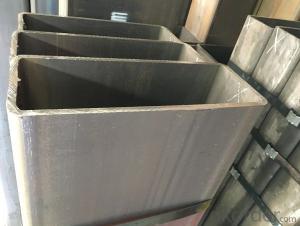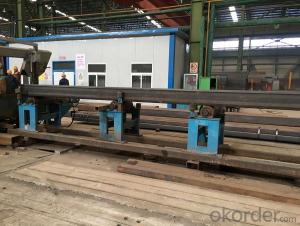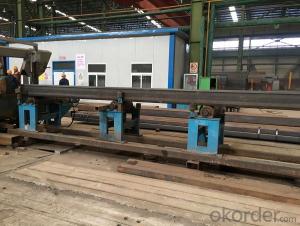National standard low carbon square rectangular tube
- Loading Port:
- Tianjin
- Payment Terms:
- TT OR LC
- Min Order Qty:
- 15 m.t.
- Supply Capability:
- 9800 m.t./month
OKorder Service Pledge
OKorder Financial Service
You Might Also Like
Specification
1、Structure of National standard low carbon square rectangular tube:
Square tube, square tube is a kind of call and rectangular tube, is equal and not equal to the length of steel pipe. Is the strip through the process of processing roll system. In general is the strip through the demolition of the package, flat, curly, welded to form a circular tube, and then rolled into a square tube and then cut into a square tube and then cut into the required length.
2、Main Features of National standard low carbon square rectangular tube:
• High manufacturing accuracy
• High strength
• Small inertia resistance
• Strong heat dissipation ability
• Good visual effect
• Reasonable price
3、 National standard low carbon square rectangular tube Specification:
Standard | GB, DIN, ASTM |
Grade | 10#-45#, 16Mn 10#, 20#, 45#, 16Mn |
Thickness | 1.5 - 25 mm |
Section Shape | Square and rectangular |
Outer Diameter | 20*20 mm-------400*400mm 20*30mm*300*500mm |
Place of Origin | Tianjin, China (Mainland) |
Length | 3-12M |
Outer Diameter | 20*20 mm-------400*400mm 20*30mm*300*500mm |
Grade | 235B 345B |
Standard | ASME, ASTM |
1) Material:(ASTM A 106/A53 GRB.API5LGRB,GB,235B,345B
2) Specification range:OD: 20*30mm----300*500mm 20*20 mm---400*400mm ,WT: 1.5 - 25 mm ,length:3-12m or according to the requirement of clients.
3) Excutive standards:GB,ASME API5L.ASTM A 106/A53,Despite of the above
4) Surface:black lacquered,varnish coating or galvanized.
5) Ends:Beveled or square cut ,painted.
6) Packing:bundles wrapped with strong steel strip,seaworthy packing.
4、Packaging & Delivery
Packaging Details: | seaworthy package,bundles wrapped with strong steel strip |
Delivery Detail: | 15-30days after received 30%TT |
5、FAQ of National standard low carbon square rectangular tube:
①How is the quality of your products?
Our products are manufactured strictly according to national and internaional standard, and we take a test
on every pipe before delivered out. If you want see our quality certifications and all kinds of testing report, please just ask us for it.
Guaranteed: If products’ quality don’t accord to discription as we give or the promise before you place order, we promise 100% refund.
②How about price?
Yes, we are factory and be able to give you lowest price below market one, and we have a policy that “ for saving time and absolutely honest business attitude, we quote as lowest as possible for any customer, and discount can be given according to quantity”,if you like bargain and factory price is not low enough as you think, just don’t waste your time.Please trust the quotation we would give you, it is professional one.
③Why should you chose us?
Chose happens because of quality, then price, We can give you both.Additionally, we can also offer professional products inquiry, products knowledge train(for agents), smooth goods delivery, exellent customer solution proposals.Our service formula: good quality+good price+good service=customer’s trust
SGS test is available, customer inspection before shipping is welcome, third party inspection is no problem.
6、 National standard low carbon square rectangular tube Images:
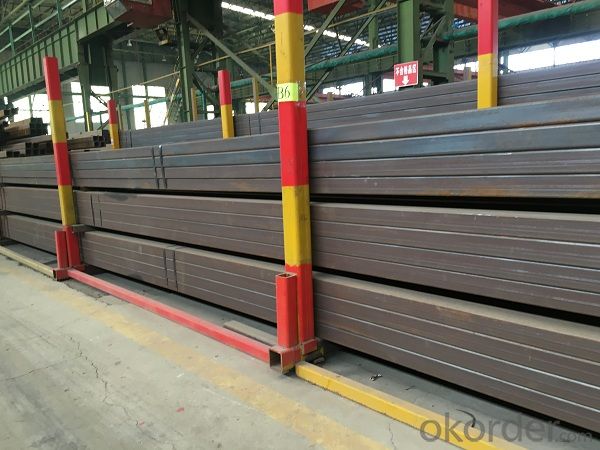
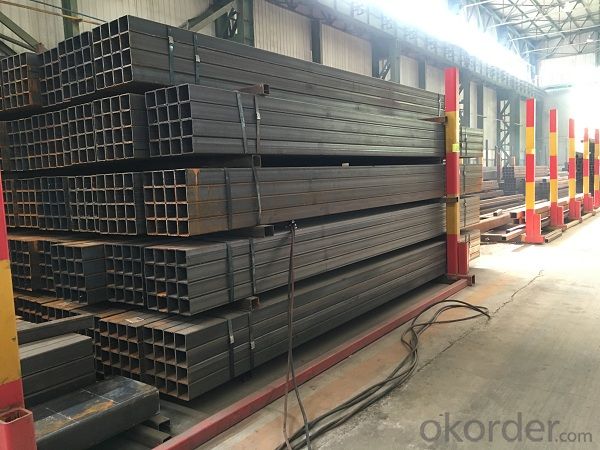
- Q: How are steel pipes used in the fabrication of storage tanks?
- Steel pipes are commonly used in the fabrication of storage tanks due to their strength, durability, and versatility. These pipes serve various purposes throughout the tank fabrication process. Firstly, steel pipes are used for the construction of the tank's foundation. They provide a sturdy base for the tank, ensuring stability and preventing any potential structural issues. During the tank fabrication process, steel pipes are also used for the construction of the tank's shell. These pipes are welded together to create a cylindrical structure that can withstand the pressure and weight of the stored material. Furthermore, steel pipes are utilized for the installation of inlet and outlet pipes. These pipes allow for the controlled flow of materials into and out of the storage tank. Additionally, steel pipes are often used for the fabrication of support structures within the tank. These structures help to distribute the weight of the stored material and provide additional reinforcement to the tank. In terms of maintenance and repair, steel pipes are also essential. They are used for the installation of access points, such as manholes or inspection ports, which allow for routine inspections, cleaning, and any necessary repairs. Overall, steel pipes play a crucial role in the fabrication of storage tanks by providing a strong and reliable framework. They are used for the construction of the tank's foundation, shell, inlet and outlet pipes, support structures, and access points. With their durability and versatility, steel pipes ensure the integrity and functionality of storage tanks.
- Q: Can steel pipes be used in earthquake-prone areas?
- Yes, steel pipes can be used in earthquake-prone areas. Steel has high tensile strength and can withstand seismic forces better than other materials. Additionally, steel pipes can be designed to be flexible and resistant to bending and cracking during earthquakes, making them a suitable choice for infrastructure in such areas.
- Q: What are the different strategies for pipe laying using steel pipes?
- Various strategies exist for laying steel pipes, each tailored to specific environments and needs. Here are a few commonly used approaches: 1. Open Trench: The traditional and widely employed method involves digging a trench along the desired pipeline route. Steel pipes are then placed in the trench, aligned, and welded together. This technique allows for easy access, maintenance, and repair of the pipeline. 2. Direct Pipe: This method is utilized when the pipeline needs to pass beneath obstacles like rivers or highways. It entails drilling a borehole from one side to the other while simultaneously laying the steel pipe. The pipe is subsequently pulled through the borehole, resulting in a continuous pipeline. 3. Horizontal Directional Drilling (HDD): HDD is employed when the pipeline must be installed beneath existing infrastructure or environmentally sensitive areas. A pilot hole is drilled horizontally, and the steel pipe is then pulled through using a reaming tool. This approach minimizes surface disruption and reduces environmental impact. 4. Sliplining: This technique involves inserting a smaller diameter steel pipe into an existing larger pipe. The smaller pipe is pushed or pulled into the larger one, providing a new corrosion-resistant lining. Sliplining is commonly used for rehabilitating deteriorated or damaged pipelines. 5. Microtunneling: Similar to HDD, microtunneling employs a microtunnel boring machine (MTBM) that simultaneously excavates the soil and installs the steel pipe. This method is frequently used for precise pipe laying, particularly in urban areas with limited space. 6. Jacking: Jacking, also referred to as pipe jacking or pipe ramming, is suitable for installing steel pipes in soil conditions that are unsuitable for open trenching. Hydraulic jacks or pneumatic rams are used to push the steel pipe into the ground. Jacking is commonly employed for crossing under railways, roads, or buildings. 7. Offshore Pipeline Laying: When it comes to subsea applications, various techniques can be employed, including S-lay, J-lay, or reel-lay. These methods involve deploying the pipeline from a vessel, either vertically or at an inclined angle, and welding the steel pipes together as they are lowered to the seabed. Each strategy possesses unique advantages and considerations, depending on factors such as terrain, environmental impact, existing infrastructure, and project requirements. It is crucial to thoroughly assess these factors and select the most appropriate pipe laying strategy to ensure the safe and efficient installation of steel pipes.
- Q: How are steel pipes recycled at the end of their life cycle?
- Steel pipes are typically recycled at the end of their life cycle through a process called steel recycling. This involves collecting the used pipes, separating them from other materials, and then melting them down to be formed into new steel products. The recycling process not only helps conserve valuable resources but also reduces the need for new steel production, making it an environmentally sustainable solution.
- Q: What is the difference between seamless steel pipes and seamless stainless steel pipes?
- The main difference between seamless steel pipes and seamless stainless steel pipes lies in their composition. Seamless steel pipes are made from carbon steel, which contains mainly iron and carbon. On the other hand, seamless stainless steel pipes are made from an alloy of iron, chromium, and other elements like nickel and molybdenum. The addition of these elements in stainless steel pipes provides enhanced corrosion resistance, making them suitable for applications where corrosion is a concern. Additionally, stainless steel pipes typically have a higher tensile strength and better heat resistance compared to regular steel pipes.
- Q: What are the standard specifications for steel pipes?
- The standard specifications for steel pipes vary depending on the intended use and industry requirements. However, some common standard specifications include the pipe's size, wall thickness, material composition (such as carbon steel or stainless steel), and pressure ratings. Other specifications may include the pipe's shape, length, and surface finish. It is essential to consult relevant standards organizations, such as ASTM or ASME, to determine the specific standard specifications for steel pipes in a given application.
- Q: What's the difference between steel pipe and pipe fittings?
- Pipe classification: steel pipe seamless steel pipe and welded steel pipe (tube) two categories. It can be divided into round tube and special-shaped tube according to the sectional shape. The round steel tube is widely used, but there are some special-shaped steel tubes such as square, rectangle, semicircle, hexagon, equilateral triangle and octagon.
- Q: How are steel pipes used in the construction of tunnels?
- Steel pipes are commonly used in the construction of tunnels for various purposes, such as drainage systems, ventilation, and providing structural support. They are used to create efficient and durable drainage systems to manage water flow and prevent flooding in tunnels. Steel pipes are also used for ventilation systems, allowing fresh air to circulate and remove pollutants. Additionally, they can be employed to provide structural support, reinforcing the tunnel walls and ensuring stability and safety.
- Q: Can steel pipes be used for high-temperature applications?
- Yes, steel pipes can be used for high-temperature applications. Steel pipes possess excellent heat resistance properties, making them suitable for conveying fluids or gases at elevated temperatures. The high melting point and thermal conductivity of steel allow it to withstand and transfer heat effectively, making it a reliable choice for industries such as oil and gas, power generation, and chemical processing. Additionally, steel pipes can be manufactured with specific alloys or coatings to enhance their resistance to corrosion and oxidation, further increasing their suitability for high-temperature applications.
- Q: How are steel pipes used in the construction of sewer systems?
- Steel pipes are commonly used in the construction of sewer systems due to their durability and strength. These pipes are used to transport wastewater and sewage from buildings to treatment plants or disposal sites. They are ideal for underground installation as they can withstand high pressure, resist corrosion, and are less prone to damage from external forces. Additionally, steel pipes can be easily welded or joined together, allowing for efficient installation and maintenance of sewer systems.
Send your message to us
National standard low carbon square rectangular tube
- Loading Port:
- Tianjin
- Payment Terms:
- TT OR LC
- Min Order Qty:
- 15 m.t.
- Supply Capability:
- 9800 m.t./month
OKorder Service Pledge
OKorder Financial Service
Similar products
Hot products
Hot Searches
Related keywords
